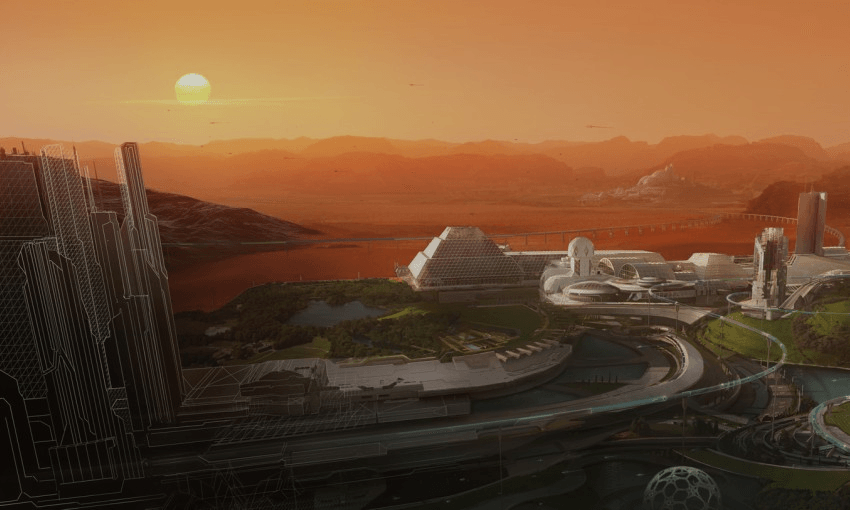Will humans ever have a colony on Mars? If we do, some cutting edge technology of today could help us get there.
If humans ever want to achieve the outlandish, science fiction sounding goal of a colony on Mars, our species will get there in part thanks to virtual reality.
That’s one of the goals of the HP Mars Home Planet project, which is coordinating architects, engineers, coders, game designers, physicists, and people from all sorts of other disciplines to start designing what a colony on Mars might look like. The project takes the form of a competition, with prizes for designers who come up with the best, and most workable plans for cities, vehicles, and machines that would make life on Mars liveable.
As NASA prepares to send a manned mission to Mars in the 2030s, children being born today might one day be in position to contemplate being martian pioneers.
HP exec Sean Young (who incidentally is a big fan of Mars-colonising TV show The Expanse) sees great potential for humanity to one day live on the red planet, but says it will take a vast and cumulative effort over decades, and maybe even centuries to make it work.
“We might not be at that future for a couple of hundred years, when we could have a million people on Mars, but the design process needs to start now, because it’s very complex,” he says.
The current mission being planned by NASA is just an early step in the greater goal – to sustain human life outside of earth. To date, more missions to Mars have been failures rather than successes, including the first six efforts back in the 60s. It’s worth bearing in mind that all of the first flyby, lander, orbiter and rover type missions failed, which doesn’t exactly bode well for the first manned mission.
Young says the energy being put in to the future manned mission, opens up space to consider what else could one day be possible.
“Everyone’s focused on getting people to Mars alive, and getting them back home alive. So why don’t we think about this future on Mars, because it’s going to have a lot of iteration, to nail that concept down and test it.”
That concept – repetitive iteration – is at the heart of why VR technology is being used. During a recent presentation in Auckland, in which HP showed off all their latest toys to staff and clients, Young brought up the work the company does with Formula 1 team Renault. Because F1 rules limit the amount of time teams can spend using testing facilities like wind tunnels, other tools like VR need to be used to model what the effects of tiny, incremental changes will be.
It’s a good analogy, because just like any tiny mistake from a Formula 1 driver could result in a crash, so too could any tiny mistake in the building of a colony on Mars result in collapse. The surface of the planet is utterly inhospitable, and despite terra-forming being a staple of space travel science fiction, will quite possibly be permanently so. There’s no air to breath, as far as we know no water that can be drunk, no food to be eaten, and no Ubers to pick you up if it all falls apart.
“Virtual reality – it’s as close as most of us will ever get to being on the surface of Mars, and that helps us understand. Otherwise you’re just looking at pictures. You can create a video, but it’s still kinda distant from you,” says Young.
“But when you put the VR headset on, I can explain it to you but you can’t understand it until you try it.”
VR technology is yet to be adopted in any meaningful mass-market sense, but increasingly it is being used in a range of fields for training and testing. Doctors are using VR to learn how to do complex surgeries before they get let loose on an actual human, for example.
And of course, the technology being designed at the moment for a colony on Mars remains pretty speculative. It’s a goal so ambitious, humans may simply never be able to pull together enough to pull it off.
But whoever volunteers to be on that first colonising ship to another planet, will probably feel a lot more confident about their mission if they’ve already been on it dozens of times through VR.
he Spinoff’s science content is made possible thanks to the support of The MacDiarmid Institute for Advanced Materials and Nanotechnology, a national institute devoted to scientific research.

